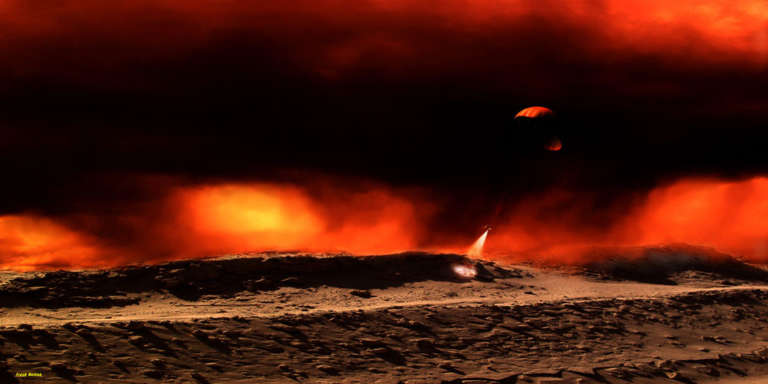Emily Lakdawalla • May 19, 2011
Titan's lack of lightning
It's a fact of life in science that not all of your hypotheses will turn out to be correct (or even verifiable at all). But there's a bias toward the publication of positive results -- the discovery of this, or the proof of that. So I always find it refreshing to read a publication about hypotheses that didn't work out. A recent paper in Geophysical Research Letters by Georg Fischer and Don Gurnett describes "The search for Titan lightning radio emissions," a search that wound up fruitless.
It wasn't for lack of searching. Fischer and Gurnett used the Radio and Plasma Wave Science (RPWS) instrument, which can detect high-frequency radio emissions, from a total of 72 Titan flybys. RPWS has three perpendicular, 10-meter antennas and doesn't need to be pointed, so it doesn't interfere with the acquisition of data from other instruments (except in terms of how much of Cassini's precious onboard memory is needed to store the data). So RPWS could theoretically operate continuously for as much as 24 hours around Cassini's closest approach to Titan on each of those flybys. It wasn't used quite that much, but Cassini has listened for lightning on Titan for more than 600 hours. That is a lot of observation time.
Given the fact that Titan has convective clouds that produce rainfall, it really ought to have lightning. If Titan's lightning is as intense as Earth lightning, it would be detectable as "bursty" signals in the data within 35 Titan radii (or about 90,000 kilometers). Now, RPWS did record some bursts during one Titan flyby, but Fischer and Gurnett show that these bursts came from Saturn rather than Titan. Bursts from Titan would increase in intensity as Cassini approached Titan, and decrease as it flew away from Titan after the flyby, but all bursts recorded during Titan flybys did not change in intensity with Cassini's changing distance from Titan. Even more conclusive evidence that the bursts came from Saturn is that a burst shut off sharply as Cassini got very close to Titan and the big moon occulted a known storm-producing region on Saturn's disk.
Of course, the problem with a negative result is that it's difficult to prove a negative conclusively. Sure, they didn't find any evidence for lightning in 72 flybys. But it could just be a very rare event. There were a few "weak sporadic bursts" that they could not positively attribute to either Saturn or the Sun, but because of the many possible sources of radio bursts in the Saturn system, "a positive identification of Titan lightning still needs great care....we should demand at least a few dozen of intense bursts with a clear fall-off in intensity with distance to Titan for a positive identification of Titan lightning." Also, there are places in the solar system where there definitely is lightning that doesn't produce high-frequency radio emissions, notably Jupiter.
Why does anybody even care about lightning? Because of the Dr. Frankenstein-like spark it could give to the brew of organic materials floating in Titan's atmosphere. Lightning would efficiently produce hydrogen cyanide and cyanogen, materials that we think of as poisons but which form building blocks for more complex compounds that we think are necessary for carbon-based life, including amino acids. Even without mentioning life, the compounds that lightning would create in Titan's atmosphere are important to scientists trying to understand Titan's atmospheric chemistry -- how the atmosphere evolved, and how it affects Titan's weather and climate.



 Explore Worlds
Explore Worlds Find Life
Find Life Defend Earth
Defend Earth

